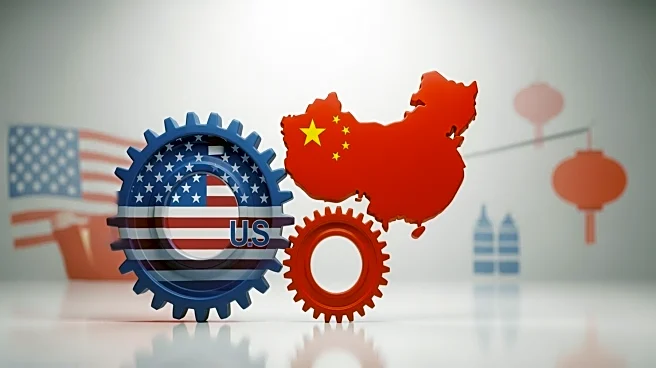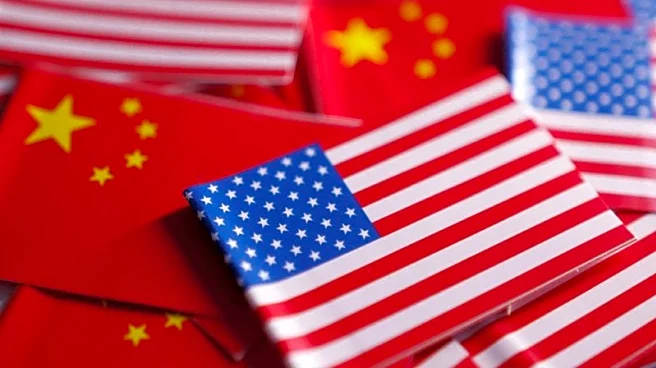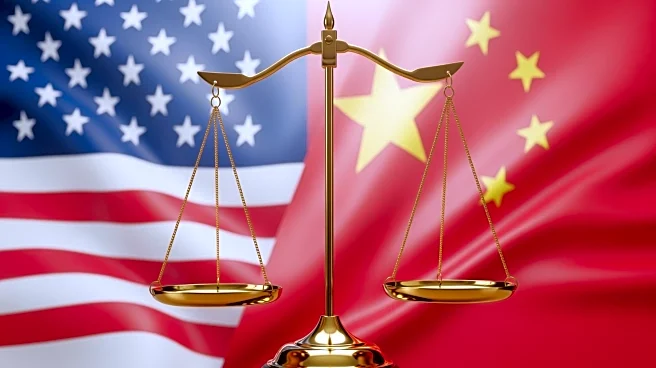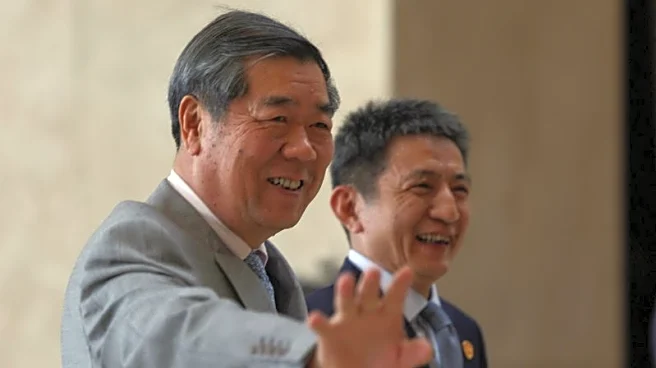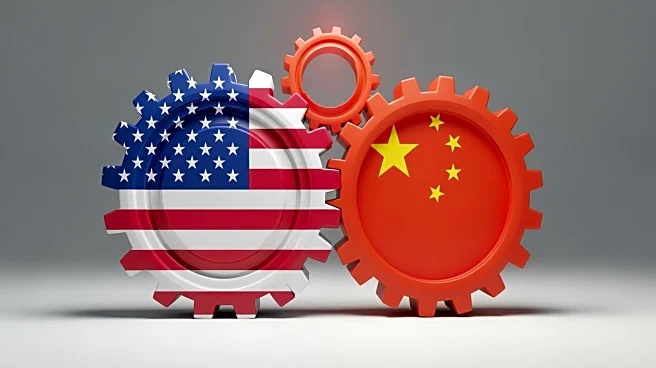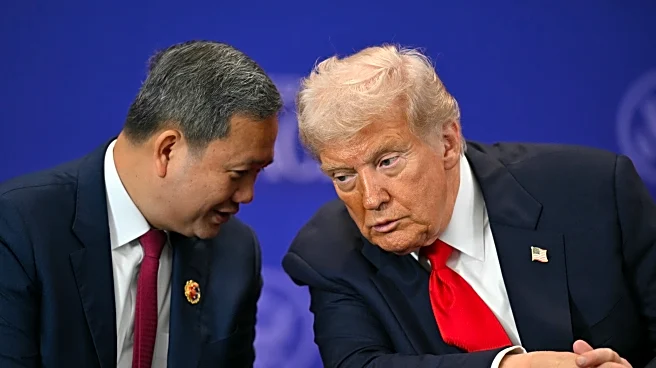What's Happening?
Top Chinese and U.S. economic officials have outlined a framework for a trade deal that U.S. President Donald Trump and Chinese President Xi Jinping are expected to finalize. The agreement aims to pause steeper American tariffs and Chinese rare earths
export controls, while resuming U.S. soybean sales to China. U.S. Treasury Secretary Scott Bessent announced that the talks, held on the sidelines of the ASEAN Summit in Kuala Lumpur, have eliminated the threat of Trump's 100% tariffs on Chinese imports starting November 1. The deal also includes a delay in China's rare earth minerals and magnets licensing regime by a year. The leaders are scheduled to meet on Thursday in South Korea to sign off on the terms.
Why It's Important?
The potential trade agreement between the U.S. and China is significant as it could ease tensions between the world's two largest economies. The pause on tariffs and export controls may stabilize markets and provide relief to industries reliant on rare earths, which are crucial for high-tech manufacturing. U.S. soybean farmers stand to benefit from resumed sales to China, potentially boosting the agricultural sector. The deal could also impact global trade dynamics, as both countries navigate their economic relationship amid geopolitical tensions.
What's Next?
President Trump and President Xi are expected to meet on Thursday to finalize the trade deal. The agreement's success could lead to further negotiations on other contentious issues, such as the U.S. fentanyl crisis and the transfer of TikTok to U.S. ownership. The outcome of the meeting may influence future trade policies and bilateral relations between the U.S. and China.
Beyond the Headlines
The trade truce may provide temporary relief, but long-term solutions are needed to reduce U.S. dependence on Chinese rare earths. Policymakers must continue efforts to secure alternative sources for these essential materials to prevent future extortion by Beijing.



